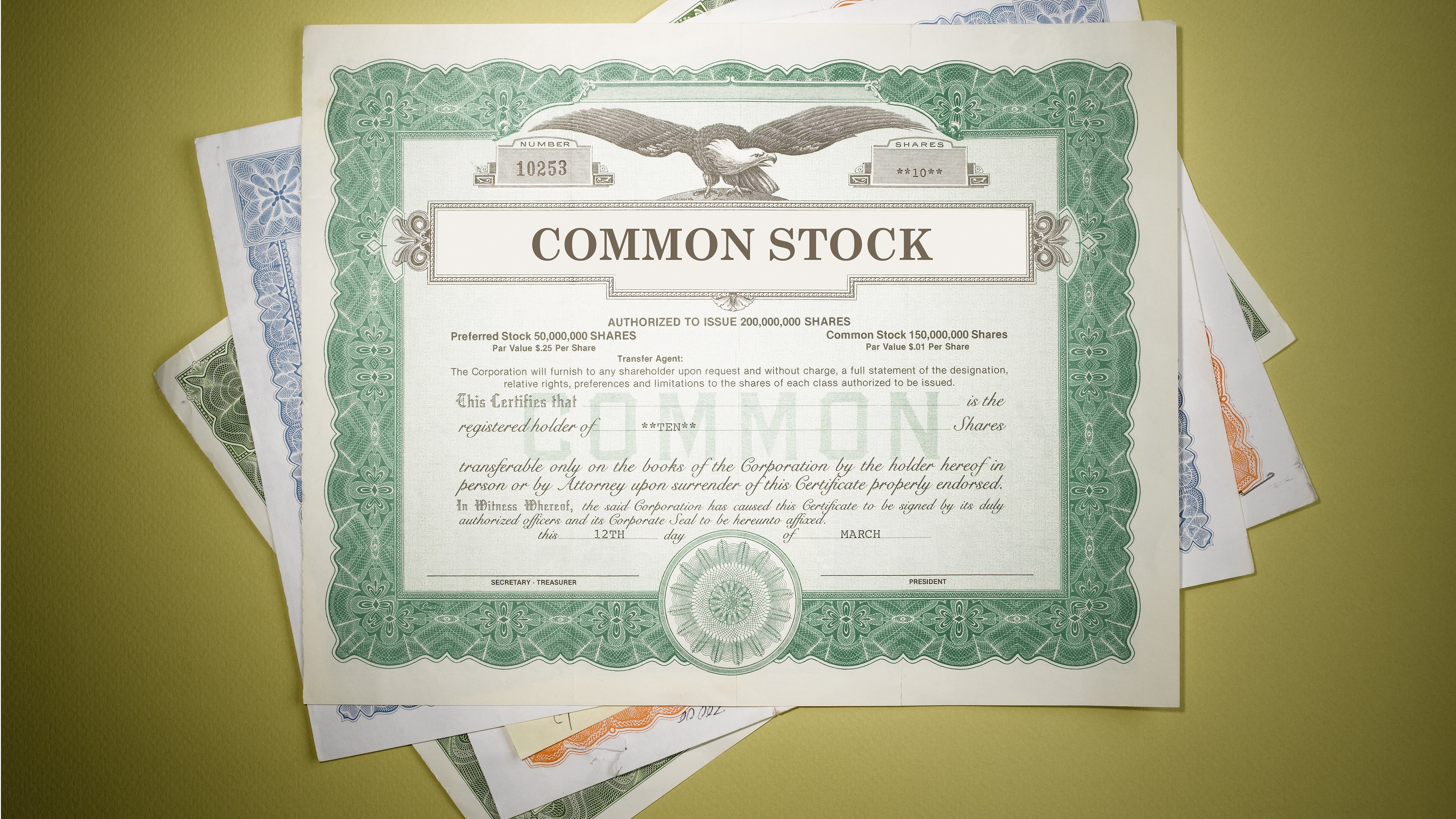How to Find High Yields in Today's Market
Kiplinger's guide to finding the best opportunities for high yields in nine categories — from super-safe options to higher-risk choices with big potential rewards.

Late to address the inflation challenge, the Federal Reserve Board has made up for lost time by jacking up the federal funds rate (the rate banks charge each other for overnight loans) by 4.75 percentage points since March 2022.
The rate hikes have not yet slain the inflation bogeyman — but did succeed in crushing stock and bond markets in 2022. Now the Fed must also weigh the risks of a banking crisis and possible recession in determining its path forward. If there is one silver lining from the dramatic tightening of monetary policy, it is that much-higher rates have produced some attractive yields for investors in bonds and some other asset classes. “Investors have opportunities in all kinds of income-producing categories that they haven’t had for 15 years,” says Andy Kapyrin, co-chief investment officer of CI RegentAtlantic Private Wealth.
Yields are respectable again in Treasury securities and high-grade corporate IOUs and much plumper in riskier high-yield bonds. Weaker stock prices and increases in dividend distributions have created opportunities in stocks and energy-infrastructure businesses, with the additional advantage of providing some protection against rising consumer prices. As a result of jumpy markets, shares of many closed-end funds and business development companies (a new category in this year’s income survey) are selling at significant discounts to the value of the assets in their portfolios. This guide will help you find attractive income-producing investments in nine different categories, ranging from low-risk, ordinary securities to rather complex, high-risk offerings with the potential for high returns. Although yields and risk typically move higher in lockstep, that’s not always the case this year, and we’ve listed investments roughly in order of ascending risk.

Sign up for Kiplinger’s Free E-Newsletters
Profit and prosper with the best of expert advice on investing, taxes, retirement, personal finance and more - straight to your e-mail.
Profit and prosper with the best of expert advice - straight to your e-mail.
Before you reach for some handsome yields, though, keep a few considerations in mind. You should have a financial plan that targets long-term portfolio allocations. Everyone’s financial picture is unique, but generally speaking, you should ensure that you have enough cash or cash equivalents on hand to cover a minimum of six months’ worth of living expenses before you invest in high-risk/high-return assets. Prices, yields and other data are through March 31, unless otherwise noted. Be aware that as interest rates jump around, yields on bond funds are a fast-moving target.
The Best Options For High Yields
5% Short-Term Accounts
Yields on short-term, fixed-income accounts and securities take their cue from Fed policy, and that is resulting in some attractive yields for cash and other short-term liquid assets. “Instruments with little risk finally are offering respectable yields,” says Kapyrin. After years of famine, investors now have some tasty yields to feast on.
THE RISKS: Rates are unusually volatile this year, which means that when short-term investments mature, it’s hard to know what yields will be on offer. Safe cash equivalents are required for emergency reserves and to meet near-term liabilities, such as taxes and tuition payments. But particularly in this era of high (and unpredictable) inflation, excessive cash balances are a drag on purchasing power.
HOW TO INVEST: The stunningly rapid rise of interest rates has created some distortions. For example, even with 4%-to-5% yields available today in low-risk assets, many banks are still paying customers less than 1% on their deposits. “People who have their money in banks are asleep,” says Lew Altfest, chief investment officer of Altfest Personal Wealth Management.
- Money market mutual funds trade daily, which can be important for liquidity, and funds such as VANGUARD FEDERAL MONEY MARKET (VMFXX, YIELD 4.8%) offer attractive yields.
- An FDIC-insured certificate of deposit from online savings bank MARCUS BY GOLDMAN SACHS pays 5.1% on a 10-month deposit with a $500 minimum balance.
- Treasury bills, which are free from state and local taxes, have a substantial advantage over CDs and other interest-bearing assets in taxable accounts, in high-tax states such as New York and California, notes Kapyrin. One short-term Treasury exchange-traded fund he uses in client accounts is GOLDMAN SACHS ACCESS TREASURY 0-1 YR (GBIL, $100, 4.5%). ISHARES 1-3 YEAR TREASURY BOND (SHY, $82, 4.6%) also holds a basket of Treasuries, but its higher duration (a measure of interest-rate sensitivity) puts it more at risk if rates keep rising (rates and prices move in opposite directions). Default is not a risk with these funds, but you can lose money in either because net asset values fluctuate daily with changes in bond prices.
4-5% Municipal Bonds
Issued by U.S. states and local governments, muni bonds pay interest that is free from federal taxes — and for bonds issued in your state of residence free from state and local taxes as well. High-quality, investment-grade munis (you can also find riskier, high-yield munis) tend to perform well in a recession and, like Treasuries, can benefit from a flight to securities seen as safe havens in turbulent bond markets, such as we have experienced in 2023.
THE RISKS: Since muni bond prices have moved higher in sympathy with Treasuries, munis are not a screaming value today. “You really need to be in the highest tax brackets in high-tax states for munis to make sense,” says Kapyrin. However, thanks in part to bountiful COVID-related relief, municipal government finances are generally sound and, like Treasuries, the asset class can play a useful diversifying role in a portfolio.
HOW TO INVEST: To calculate and compare the tax-equivalent yield of a muni to a Treasury or other taxable bond, simply divide the yield by 1 minus your federal income tax bracket.
For example, for someone in the 24% tax bracket, the tax-equivalent yield of a muni bond yielding 3% is 3.95% (3%/1–0.24). You can gain exposure to well-diversified baskets of investment-grade muni bonds by investing in a national muni fund.
- Actively managed VANGUARD INTERMEDIATE-TERM TAX-EXEMPT (VWITX, 3.2%) holds 12,400 bonds, 90% of which are rated A or higher, and has a duration of 4.8, which implies a loss of approximately 4.8% if yields move up by one percentage point. For a taxpayer in the 24% federal bracket, the tax-equivalent yield is 4.2%, or 5.1% for someone in the highest federal bracket of 37%.
- You can do slightly better on yield with VANGUARD TAX-EXEMPT BOND (VTEB, 3.3%), which has a rock-bottom expense ratio of 0.05% but comes with a higher duration of 5.9. The tax-equivalent yield is 4.3% for investors in the 24% bracket, or 5.2% for those in the 37% bracket.
- Mary Ellen Stanek, president of Baird Funds, notes that the farther out on the yield curve you go, the more attractive munis start to look compared with taxable bonds. For example, a five-year muni’s yield is less than two-thirds that of a Treasury of the same maturity but 92% the yield of a 30-year Treasury.
- FIDELITY MUNICIPAL INCOME (FHIGX, 3.4%) has a duration of 7.4 and tax-equivalent yields of 4.5% and 5.4% for taxpayers in the 24% and 37% brackets, respectively. The fund is heavily weighted toward revenue bonds (as opposed to general obligation issues), which are supported by specific projects — in this case, mostly in the healthcare and transportation sectors. The two largest state exposures are Illinois and Pennsylvania.
4-5% Investment-Grade Bonds
The core of a typical fixed-income portfolio comprises investment-grade bonds issued by the U.S. Treasury, government agencies (mortgage-backed securities, for instance) and corporations. Prior to 2022, when interest rates surged, these assets offered little income. That has changed dramatically over the course of the past year.
“Investment-grade bonds are a compelling asset class today and have restored their ability to diversify portfolios,” says David Albrycht, chief investment officer of Newfleet Asset Management. In short, bonds are back.
THE RISKS: Last year was one of the worst years for bonds in history, owing to those surging rates. The Bloomberg U.S. Aggregate Bond index, which tracks intermediate-term investment-grade paper, slumped 13% in 2022. But that was then. One new risk is that some investors are so shellshocked from losing money on high-grade bonds in that dreadful year that they don’t take advantage of today’s much higher yields (and lower risk due to the interest rate starting point).
HOW TO INVEST: One thing that excites Kapryin is that investors can again earn positive real yields (the yield minus the inflation rate) on Treasuries and corporate bonds after losing money on an inflation-adjusted basis in 2021 and 2022. For example, he notes that real yields on intermediate-term corporate bonds are 2% to 3%. “After inflation, you’re talking about a yield that is back to normal,” he says.
- FPA NEW INCOME (FPNIX, 4.1% as of February 28) has a sterling record of risk management and protecting shareholders’ capital. Abhijeet Patwardhan, the manager, says he has been extending the duration of the portfolio (roughly 2, currently) over the past 18 months with the increase in interest rates. He’s particularly fond of structured products, such as mortgage- and asset-backed securities, which, unlike most corporate bonds, are secured by the asset in which you’re investing. “We find that you can get better yields than on Treasuries or corporate bonds of comparable maturities,” he says.
- Securitized asset-backed products are the stock-in-trade of Jeffrey Gundlach’s DOUBLELINE TOTAL RETURN BOND (DLTNX, 4.9% as of February 28). Jeffrey Sherman, DoubleLine’s deputy chief investment officer, says the fund has extended its average duration from 4 at the start of 2022 to 6.3, the longest in the fund’s history. “You get paid to take risk now,” he says. Sherman notes that Total Return has also upgraded the portfolio’s credit quality by moving more into government-guaranteed assets, such as agency mortgage-backed securities.
- For something more diversified, consider BAIRD AGGREGATE BOND (BAGSX, 3.9%). Piloted by Baird’s co-chief investment officers, Stanek and Warren Pierson, this intermediate-term fund (its duration is 6.3) invests in government and corporate debt along with asset-backed securities. The fund is a recent addition to the Kiplinger 25, the list of our favorite no-load, actively managed funds.
7%–10% High-yield Bonds
High-yield “junk” bonds are issued by firms with below-investment-grade ratings. For lending to these riskier businesses, investors are compensated with higher yields than investment-grade bonds offer (the current yield of a widely used high-yield bond index is nearly 9%). Junk bonds move more in sync with stocks than Treasuries and most likely merit only a limited portion of your fixed-income allocation.
THE RISKS: The risk of default is normally the chief concern, and defaults historically have surged during recessions. But junk-bond fund managers are sanguine that even if a recession arrives, the default rate will rise to maybe only 4% this time instead of the historical average of 8% or higher. “The bad companies got washed out during COVID, and the fair-to-good companies were able to refinance and lock in low-interest rates and extend maturities,” says Dave Breazzano, portfolio manager and head of Polen Capital’s high-yield team. The share of BB-rated companies, the highest rung of junk bonds, is nearly the largest it has ever been and includes many “fallen angels” (former investment-grade corporations that were downgraded to junk), such as Ford and Occidental Petroleum.
HOW TO INVEST: High-yield managers calculate that even if defaults rise to 3% or 4% and recovery rates on the debts are only 40%, they can still generate a positive return.
That is because yields are relatively high, and the average junk bond sells at only 88 cents on the dollar. “Bonds are trading at discounts even if they are issued by fundamentally solid companies,” says Breazzano.
- Of course, it also helps if you have a seasoned risk manager like Carl Kaufman, who has steered OSTERWEIS STRATEGIC INCOME (OSTIX, 7.3%) since 2002. Kaufman says the fund’s duration is 2.5, compared with 4.1 for the high-yield market overall, and that he is avoiding cyclical commodities businesses whose fortunes tend to rise and fall with the economy. Instead, he’s searching for companies that have pricing power and a strong competitive position. “We’re looking for business models that don’t depend on the economy being super strong and whose managements understand the importance of a strong balance sheet in times of stress,” he says.
- PGIM HIGH YIELD (PHYZX, 9.9%) makes the most of an army of 50 credit analysts, many of them focused on specific industries, according to Robert Cignarella, head of U.S. high yield at PGIM Fixed Income (PGIM is the asset-management division of Prudential Financial). Cignarella says the fund (duration: 3.8) has an overweight position in the bonds of housing and building-product firms because there is a serious housing shortage. He also likes electric-power generators due to strong pricing power and underinvestment in power that will need to be addressed to fuel the electrification of the country’s auto fleet.
- For something slightly tamer, consider VANGUARD HIGH-YIELD CORPORATE (VWEHX, 7%), which focuses on higher-rated junk bonds. A member of the Kiplinger 25, the fund holds a basket of nearly 800 bonds, more than 80% rated B or BB. The fund has a duration of 3.9.
4%–7% Dividend Stocks
Stocks that pay dividends play an important income role in a diversified portfolio. Unlike fixed-income investments such as Treasuries and corporate bonds, healthy corporations can boost dividend distributions annually, which is a potent method to maintain purchasing power in an inflationary environment such as we have today.
THE RISKS: Stocks tend to be much more volatile than high-grade bonds. Very high yields on stocks can be an indication of poor growth prospects or a business in distress. “Don’t go for the highest-yielding securities, because they will be challenged,” says Altfest. Instead, look for dividend growth stocks, which Simeon Hyman, global investment strategist at ProShares, calls “an elegant proof of quality.”
HOW TO INVEST: Not surprisingly, some bargains have emerged in banks and other financial institutions in the wake of some recent highly publicized bank failures. “We’re in an environment where people shoot first and ask questions later,” says John Buckingham, editor of The Prudent Speculator.
- He spots value in FIFTH THIRD BANCORP (FITB, $27, 5.0%), a conservatively managed Midwest bank with low levels of uninsured deposits and virtually no held to-maturity securities on its balance sheet (both issues helped to topple Silicon Valley and Signature banks).
- The portfolio managers at Tweedy, Browne — dyed-in-the-wool value investors — also see bargains in the sector. They like TRUIST FINANCIAL (TFC, $34, 6.1%), a Charlotte, N.C.–based super-regional bank, for its strong footprint in the buoyant Southeast economy and diversified earnings stream. Jay Hatfield, chief executive of Infrastructure Capital Management, fancies PRUDENTIAL FINANCIAL (PRU, $83, 6.1%), a large, diversified insurance company that sells products such as life insurance and annuities. “It’s getting dragged down with banking stocks, even though it’s not a bank and its fundamentals are good-to-great,” he says.
- VERIZON COMMUNICATIONS (VZ, $39, 6.8%), the largest wireless carrier, offers a juicy yield and sells at just eight times estimated earnings. It’s a member of the Kiplinger Dividend 15, our favorite dividend stocks. If you prefer to invest in a diversified basket of dividend stocks, consider SCHWAB US DIVIDEND EQUITY (SCHD, $73, 3.5%), an exchange-traded fund (and a member of the Kiplinger ETF 20) that holds 100 stocks (top positions include Abbvie and PepsiCo) and has a stellar track record of boosting dividends each year.
- Finally, consider overseas stocks, which offer significantly higher yields than do their counterparts at home, according to Tweedy, Browne’s Robert Wyckoff. One of Tweedy’s picks is DEUTSCHE POST (DPSGY, $47, 4.1%), which owns DHL, one of the top parcel-shipping and third-party logistics outfits worldwide. For a diversified foreign portfolio, the U.S. Schwab fund has a cousin, SCHWAB INTERNATIONAL DIVIDEND EQUITY (SCHY, $24, 4.4%). Top holdings include Unilever and Deutsche Post.
3%–7% Real Estate Investments
Because REITs are required to distribute at least 90% of their taxable income each year, they offer relatively high yields. The best REITs can also offer good protection against inflation because operators are able to raise rents as leases expire.
THE RISKS: REITs are vulnerable to rising interest rates. Higher rates can stress property borrowers as well as lead to higher yields for bonds, which some investors see as yield competition for REITs. In addition, the rise of remote and hybrid work is hammering demand for urban office space.
HOW TO INVEST: REITs are a diverse industry, and portfolio managers find many of the best values in niches or sectors with strong, long-term growth drivers. For instance, a shortage of single-family homes combined with high mortgage rates and poor affordability is a boon for the housing rental market.
- This setup drew Jeff Kolitch, manager of Baron Real Estate Income, to INVITATION HOMES (INVH, $31, 3.4%), the largest owner and operator of single-family rental homes in the country, with more than 80,000 units. Kolitch also likes the economics of self-storage REITs, which tend to be recession resistant and have high cash flows, low capital spending needs and “sticky” tenants with short leases. EXTRA SPACE STORAGE (EXR, $163, 4.1%) is an example.
- Healthcare facilities are benefiting from the aging of society and a steady increase in health spending. Accordingly, Kolitch recommends WELLTOWER (WELL, $72, 3.4%), which operates outpatient medical facilities and senior housing, a strong growth sector. Mathew Kirschner, a U.S. real estate portfolio manager at Cohen & Steers, is attracted to HEALTHCARE REALTY TRUST (HR, $19, 6.6%), which owns and operates medical offices, most of which are affiliated with hospital systems.
- Industrial REITs are similarly benefiting from robust, long-term demand drivers. “Warehouse space is perhaps the most compelling category of commercial real estate, as consumers and businesses seek faster and faster delivery of goods,” says Kolitch. He particularly favors EASTGROUP PROPERTIES (EGP, $165, 3.1%) for its focus on fast-growing 4%–11% | CLOSED-END FUNDS Sunbelt states, including Texas and Florida.
- Finally, despite growing worries about a potential recession, some fund managers, including Infrastructure Capital Management’s Hatfield, are fond of SIMON PROPERTIES (SPG, $112, 6.7%), the nation’s largest shopping-mall owner. “The notion that the mall is dead is incorrect,” says Hatfield. “People do not want to be at home all day — particularly if they worked all day at home.”
6%-10% Midstream Energy Infrastructure
Midstream companies process, store and transport oil and natural gas around the country through pipelines. They are positioned between upstream companies (energy producers) and downstream firms, which produce finished goods such as liquefied natural gas (LNG).
Operating as a kind of toll road, pipelines have several advantages. For political and regulatory reasons, it’s very difficult to build a new pipeline today, and that shelters the incumbents from new competition, says Simon Lack, comanager of Catalyst Energy Infrastructure Fund. In addition, pipeline operators can pass on higher costs to customers because long-term contracts typically contain inflation escalators. Finally, the U.S. is a competitive producer of natural gas and is boosting output and exports to places such as Europe and China.
THE RISKS: The main risk is a recession, which would depress energy consumption and thus shrink the volumes moved through energy infrastructure.
HOW TO INVEST: Yields average 6% to 7% in the sector, but Lack notes that free-cash-flow yields (free cash flow per share divided by share price) are nearly double that, and he projects that those flows will grow in the mid-single-digit percentages this year. Both corporations and master limited partnerships operate in the sector. Yields tend to be higher for MLPs, which typically distribute most of their income each year and issue K-1 forms to limited partners, which can be a nuisance at tax time.
- Dan Genter, president of RNC Genter Capital Management, likes ENBRIDGE (ENB, $38, 6.9%), a conservatively run Canadian energy infrastructure giant that moves about 30% of the crude oil produced in North America and 20% of the natural gas consumed in the U.S. Lack is drawn to outfits with strong natural gas franchises, including WILLIAMS COMPANIES (WMB, $30, 6.1%), which operates an “irreplaceable” pipeline network and, like Enbridge, is registered as a corporation. For a higher yield, consider ENERGY TRANSFER LP (ET, $12, 9.8%), an MLP that is constructing a large LNG export facility in Lake Charles, La., that will convert natural gas to LNG for shipment overseas.
- For a basket of energy-infrastructure businesses, consider PACER AMERICAN ENERGY INDEPENDENCE (USAI, $26, 5.5%) or Lack’s actively managed CATALYST ENERGY INFRASTRUCTURE (MLXIX, 7.3%). Both funds hold American and Canadian stocks and, by keeping the MLP weighting to less than 25%, avoid the need to issue K-1s.
4%-11% Closed-End Funds
Closed-end funds list (and are traded) on an exchange, raise capital through an initial public offering, then invest the money in stocks, bonds and other financial assets. A closed-end fund’s share price fluctuates according to investor demand and frequently trades at a discount or premium to the per-share value of the fund’s underlying assets, or net asset value.
THE RISKS: Most closed-end funds use borrowed money, or leverage, to purchase portfolio assets. Leverage is a double-edged sword, augmenting price returns in bull markets but amplifying losses in NAV when markets decline. Additionally, when interest rates rise—as they have over the past year — fund borrowing costs increase.
HOW TO INVEST: Roughly one-third of closed-end funds invest in municipal bonds, one-third invest in taxable bonds, and one-third invest in stocks. Steve O’Neill, a portfolio manager at RiverNorth Capital Management, says wide discounts have emerged due to market volatility in stocks and bonds. “It’s a very good time to be hunting in the closed-end fund market,” he says.
- Munis have always been a staple of the industry because leverage can pump up tax-free yields. Because high-grade munis are low-risk assets, fund managers can apply more leverage than they can with volatile asset classes, such as stocks, O’Neill says, adding that unusually large discounts have created attractive opportunities.
- John Cole Scott, chief investment officer of Closed-End Fund Advisors, recommends NUVEEN QUALITY MUNICIPAL INCOME (NAD, $12, 4.1%), which trades at a 13% discount to NAV (that is, 87 cents for a dollar of assets) and has a 39% leverage ratio (borrowed money as a percentage of assets). The tax equivalent yield for someone in the 24% federal bracket is 5.4%. Nuveen is one of the largest and oldest managers of muni bond funds.
- Higher yields are on offer in taxable high-yield funds. Scott likes ARES DYNAMIC CREDIT ALLOCATION (ARDC, $12, 10.8%), which sells at a 13% discount and employs 35% leverage. The fund holds principally high-yield bonds and bank loans, with top issuers including Uber, MGM Resorts and American Airlines.
- If you like the idea of buying a dollar of assets at a steep discount but want to avoid the risk of leverage, Scott suggests ABRDN GLOBAL INFRASTRUCTURE INCOME (ASGI, $18, 8.0%), which has no leverage, trades at a 15% discount to NAV and holds a global portfolio of infrastructure-related stocks, an asset class that tends to perform well in inflationary environments.
11%–12% Business Development Companies
BDCs were created in the 1980s by Congress with a mandate to help finance small and midsize private firms that are typically too small to access bank funding. BDCs are like closed-end funds in that they raise a pool of capital and list on a stock exchange (there are also many unlisted BDCs); they borrow money to leverage portfolios; and they can trade at a premium or discount to net asset value, which is reappraised quarterly. As with REITs, BDCs are pass-through entities required to distribute at least 90% of taxable income each year. Because this is ordinary income (that is, not qualified dividend income eligible for lower tax rates), tax-deferred retirement accounts are a natural home for the assets.
Most BDC loans to small private firms are secured, first- or second-lien variable-rate loans of $25 million or less, with interest rates that are adjusted upward when lending rates rise. Hence, BDCs offer juicy yields in today’s high-rate environment. “BDCs are one of the few ways for non-institutional investors to access private credit,” says Fran Rodilosso, head of fixed-income ETF portfolio management at VanEck. Investors buy them for income, not for growth.
THE RISKS: Because these are private high-yield loans with a risk of default (particularly during a recession), they are not for the faint of heart. Leverage increases the volatility of BDC prices.
HOW TO INVEST: Due to the inherent risk of leveraged, floating-rate private credit, RiverNorth’s O’Neill recommends sticking with large, diversified and seasoned BDCs.
- Alex Seleznev, director of wealth management and financial planning at Councilor, Buchanan & Mitchell, is comfortable holding ARES CAPITAL (ARCC, $18, 10.5%). It’s the largest firm in the business, with a $22 billion portfolio of several hundred loans with broad geographic and industry diversification. Ares trades at a 1% discount to NAV and has a leverage ratio of 55%, which is about average.
- Scott, of Closed-End Fund Advisors, recommends CAPITAL SOUTHWEST CORP. (CSWC, $18, 11.9%), the oldest BDC, and OWL ROCK CAPITAL (ORCC, $13, 10.5%). Both have leverage ratios of just over 50% and predominantly hold senior secured loans. Capital sells at a 9% premium to NAV; Owl Rock, a 16% discount.
- Invest in a basket of BDCs with VANECK BDC INCOME (BIZD, $15, 10.8%). The ETF tracks a market-weighted, concentrated BDC index — the top three holdings, which include Ares and Owl Rock, account for 45% of assets. ■
Read more
Get Kiplinger Today newsletter — free
Profit and prosper with the best of Kiplinger's advice on investing, taxes, retirement, personal finance and much more. Delivered daily. Enter your email in the box and click Sign Me Up.
Andrew Tanzer is an editorial consultant and investment writer. After working as a journalist for 25 years at magazines that included Forbes and Kiplinger’s Personal Finance, he served as a senior research analyst and investment writer at a leading New York-based financial advisor. Andrew currently writes for several large hedge and mutual funds, private wealth advisors, and a major bank. He earned a BA in East Asian Studies from Wesleyan University, an MS in Journalism from the Columbia Graduate School of Journalism, and holds both CFA and CFP® designations.
-
 The AI Doctor Coming to Read Your Test Results
The AI Doctor Coming to Read Your Test ResultsThe Kiplinger Letter There’s big opportunity for AI tools that analyze CAT scans, MRIs and other medical images. But there are also big challenges that human clinicians and tech companies will have to overcome.
By John Miley Published
-
 The Best Places for LGBTQ People to Retire Abroad
The Best Places for LGBTQ People to Retire AbroadLGBTQ people can safely retire abroad, but they must know a country’s laws and level of support — going beyond the usual retirement considerations.
By Drew Limsky Published
-
 Can a New Manager Cure Vanguard Health Care Fund?
Can a New Manager Cure Vanguard Health Care Fund?Vanguard Health Care Fund has assets of $40.5 billion but has been ailing in recent years. With a new manager in charge, what's the prognosis?
By Nellie S. Huang Published
-
 What Is a Medallion Stamp? The Requirement for Transferring Securities
What Is a Medallion Stamp? The Requirement for Transferring SecuritiesTransferring securities from one account to another often requires this extra step.
By Emma Patch Published
-
 How Dividend Reinvestments Work for Retirement
How Dividend Reinvestments Work for RetirementWant your retirement investments to keep growing? Here's what you should know about dividend reinvestment.
By Robert H. Yunich Published
-
 20 Ways to Clean Up Your Finances This Spring
20 Ways to Clean Up Your Finances This SpringSpring cleaning is therapeutic and stops costly problems from building up around the home. Why not tackle the dusty corners of your finances at the same time?
By Lisa Gerstner Published
-
 The Free-Lunch Strategy to Reduce Risk From Tech Stocks
The Free-Lunch Strategy to Reduce Risk From Tech StocksA recent rout in tech stocks has some investors thinking more defensively. This "free-lunch portfolio" strategy can help.
By Anne Kates Smith Published
-
 How to Survive Market Mayhem
How to Survive Market Mayhem2025 is turning out to be a turbulent year for the market, but don't panic. Here are four ways investors can ride out the storm.
By Jeffrey R. Kosnett Published
-
 4 Turnaround Stocks to Consider – and 2 More to Keep an Eye On
4 Turnaround Stocks to Consider – and 2 More to Keep an Eye OnA turnaround stock is a struggling company with a strong makeover plan that can pay off for intrepid investors.
By Nellie S. Huang Published
-
 Has This Unconventional Growth Fund Lost Its Mojo?
Has This Unconventional Growth Fund Lost Its Mojo?The Primecap Odyssey Growth Fund has lagged the broader S&P 500, but it still boasts a solid return and provides investors with diversification.
By Nellie S. Huang Published